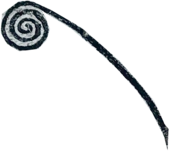Translation & (Mis)Understandings
Translation and (mis)understanding are constant underlying or explicit subjects within the project both, in a practical and in a theoretical way. I want to give a few examples how these are crucial both, in team communication and different aspects of our work process.
Among the research team members, the languages English, Chinese and German are spoken, languages that are understood in various degrees by the different team members.
It is within this framework that all levels of translation, understanding and misunderstanding take place.
Translation and language
To start with fieldwork on Lanyu, the problem of translation was a big issue, given that in different situations different translation skills (Tao and Mandarin) are required. Secondly, language on Lanyu itself and within the Tao community is a big topic, where often communication between generations is almost impossible, because the older generation mostly speaks Tao language while the younger generations mostly speak Mandarin.
That is only the general framework to which several different social and cultural aspects come along, which also shape the translations.
Johannes Kretz writes:
(…) even when translation was available in one form or another – it usually implied a significant loss of information. Not everything was translated from Tao language to Mandarin, not everything from Mandarin to German/English. A lot of reduction often happened. Sometimes the reduction occurred due to certain aspects of confidentiality or discretion. (Those who spoke explicitly asked not to translate certain things to those people regarded to be more “outside”.)
After the fieldwork many Tao songs were translated by team members which lead to big discussions among the team. The songs are translated from (old) Tao language to Mandarin to English or German. Each translation is at the same time an interpretation of the original words which are very poetic. Additional background information is needed to understand the context of the words. Here is an example of such a translation. The song is sung in the kalamat melody type and written in the old Tao language, which differs strongly from the spoken Tao.
#1 五孔洞沈船 kalamat raod 施雅春創唱
Mandarin translation: Chien-Ping Kuo
English translation and interpretation: Johannes Kretz
Prologue (not included in the original song):
In the early 1970ies an unknown iron ship stranded on Lanyu's coast near the area of the five caves. The soldiers based on Lanyu at that time tied the boat to the rocks from all sides. Important documents were required to be safeguarded and delivered to the police station. The ship broke from strong waves' impact. Its fuel leaked and covered the whole beach. It smelled badly and the pollution killed all kinds of fish there. The metal parts of the ship sunk into the sea polluting the coral reef. Finally the ship completely sunk.
Translation of the song text
avan nira ilasapen o
船 他們異族 者
A boat from them … they aren’t Tao people
oyata pinangad so kamaogan na i
它 拉長 製造
it’s construction design is long and extended
iyangongozit da jida latai
快速 無法 超越
it can’t surpass … it can’t go fast
jitalatai inganangana da sopozo namen na i ya
不能超越 跨越 各島 我們 這
it can’t pass the island … we are watching there.
pini raalin na maciriris
它被 損壞 而 漂流
it is breaking it is cracking it is drifting … no control
maciriris rana ta i na lemayan
漂流 已 被 打擊
the ocean’s state … it is drifting it is cracking
na no inazobob do cinalatawan
那 海象 在 航行中
they cannot steer they cannot get under control
na jirana longey
它 無法 再行駛
they could not drive the struggling boat
jirana longey o yamina siyasiwaz
無法 再行駛 已經 左右搖晃
it was shaking left and right … shaken in the ocean’s powers
do palanowan na i
在 海中
In the sea
i cinamogo no maoran ja lokeh
使恐懼 乘坐 者 船員
the crew drives the boat …in the most scary way
ma oran ji loga o lominangara
乘 坐 者 船員 仰望
the crew drives the boat … they are looking up to the sky
so anit a lomi nawag tomlalap do langaraen
天 召 喚 隱身 在 天上
they call the sky … what is hidden in the sky
am lalap do langaraen
隱身 在 天上
hidden in the sky … what is hidden in the sky
opey kamataen nira imanira do
那 負責(船長) 他們 外國
the captain from abroad … anchor drops on rocky shore
cinalarangan na oma lasiyas
停泊 在 陡峭 岩壁
the waves rock the boat so steep it falls apart
omalalasiyas do ni layolayong na no paong
陡峭(?) 被 搖晃 浪
they devour the boat and break it into parts
a lomolomoey siya zimokamoken
吞 噬 它 解體
scattered into pieces … broken into metal parts
zimokamoken na o palamoamolonan nyo ta lowaji
裂解 那 世世代代 你們 長壽
this affects our lives from generation to generation
paladadawen no ased no malano
被飄移 在 逆流 湧浪
drifting counter current and big waves, too
Epilogue (not included in the song text)
It took more than three years, until gradually the water quality improved, but the ecosystem needed even longer to recover from this pollution. While the government cared a lot about the documents on the ship, they didn't care for the harm to wildlife nor for the pollution of the fishing grounds, which were a burden for Iraraley village for many years.
After some years the Tao people began diving there for collecting the sunken ship's fragments as a resource of metal. They produce farming tools from it.
Rap versions
The translations inspired creative processes. Johannes Kretz composed English rap versions of this song.
Experimental
Traditional
When reading these lyrics and translations the wide space that opens up between different languages and interpretations for understanding and misunderstanding (cognitive and non-cognitive) becomes visible. This can be seen both as an advantage or disadvantage. It allows readers, interpreters and composers to approach the song in many different ways and be flexible in their own creative processes. On the other hand, we know that our actual understanding of what was originally meant by the creator of this song is limited.
Communication and (Mis)Understandings
In the project abstract it is stated:
We encourage creative (mis)understandings emerging from the interaction between research and artistic practice, and between European art music, folk and non-western styles, in particular from indigenous minorities in Taiwan. Both comprehension and incomprehension yield serendipity and inspiration for new research questions, innovative artistic creation, and applied follow-ups among non-western communities.
These words show that additionally to the language challenges the different practices and backgrounds influence the interactions (verbal and non-verbal) among the team. Cultural and social backgrounds connected with different communication styles as well as personal backgrounds and experiences can lead to all kinds of (mis)understandings that can be fruitful when discussed openly and reflected upon. There even were – for example – a few misunderstandings occurring between the Austrian and German team members regarding the communication style.
Another important topic were the dynamics of power within the project and the team members in regard to communication. I elaborate on the general issue in the article Discussions about Ethics in "Creative Misunderstandings".
The personal approaches to the project were reflected in the autoethnographies of the individual team members.
Samu Gryllus reflects on his own use of language in different cultural contexts (the whole article can be read here):
Thinking about language and culture, as well as thinking about leaving one cultural field by choosing a different language can give useful information about me. I was born with Hungarian as my mother-tongue. Hungarian is a rare, agglutinating language, where many things are communicated with one complexly modified word. It is told, to be among the most difficult languages in the world. Even if it is complex, somehow it seems to be very flexible. It allows the speaker to improvise. To figure out the end of the sentence only at the middle of the sentence. In German for example you have to know everything exactly already in the beginning of a sentence in order to have a sentence throughout with correct grammar. I discovered this information about the German language only when I started to learn it officially. But it was already many years after I moved to Vienna to study. In my first ten years in Vienna I somehow enjoyed not knowing the language, to be a stranger, or to exist like a new born baby who learns things, peoples, ideas, definitions "by experience". I did not learn the rules of the German language for many years. I have honestly no idea how I succeeded with finishing classes and degrees with that kind of "uneducated" knowledge of the language. I remember one case though. In one of the first years of my studies at an exam I had to write an analysis of a Sonatenhauptsatz. I tried to avoid writing and used a lot of colorful lines, different letters and boxes to show my understanding of structure, texture, form, motives, phrases, etc. of some gems of the common practice period. The exam was judged by two professors. Because of this, it was necessary to create a photocopy of my paper. Of course, it was a black and white copy. The second professor, the legendary Günter Kahovez wrote on my "black page" likeanalysis-paper that "Kandidat hat keine Ahnung". Literally: Candidate has no idea. Later on he understood the root of the misunderstanding, and saw the nicely made colorful analysis "ohne Worte", and I hope that he changed his mind, because I think I have some ideas though.
Finally I want to mention the two Artistic Research methods Soundpainting and Dialogue Research which are explained by Samu Gryllus in his article Two methods to create (mis)understandings and which are practiced within the project. Both are based on communication, art and understanding (sense giving).
Soundpainting is a multidisciplinary sign-language created in the 1970s by the American composer, multi-instrumentalist Walter Thompson (…) It is a unique method of communication within a community through a continuously developing set of hand signs. Nowadays the language comprises 1500 different gestures and can be used in an endless number of combinations in sentences of a given syntax. The most unique in the language is that the responses to the hand-signs are different sounds, movements or any other creative actions, so the language opens up a dialogue between defined structure and intuition can be fine-tuned to any situation in real-time.
Samu used this – slightly adapted – method in the workshop for the younger Tao community with special focus on how the disappearing traditional Tao vocal technique and music influences their partly improvisatory actions.
The Dialogue Research is a method that is realized by two artists. The rules are:
• A work of art (music, video, recording of dancing, images of paintings or drawings, anything that can be shared via internet) is created in response to the work of the other artist.
• Both artists are creating a written analysis about their own artwork, but keep it in secret until they get the a response from the other artist to their work.
• These actions are repeated until both artists feel that they mutually understand each other´s approach to their works.
Within our project Samu Gryllus and Si Pehbowen are partners in this dialogue, creating a long, documented process of understanding and misunderstanding. Link

